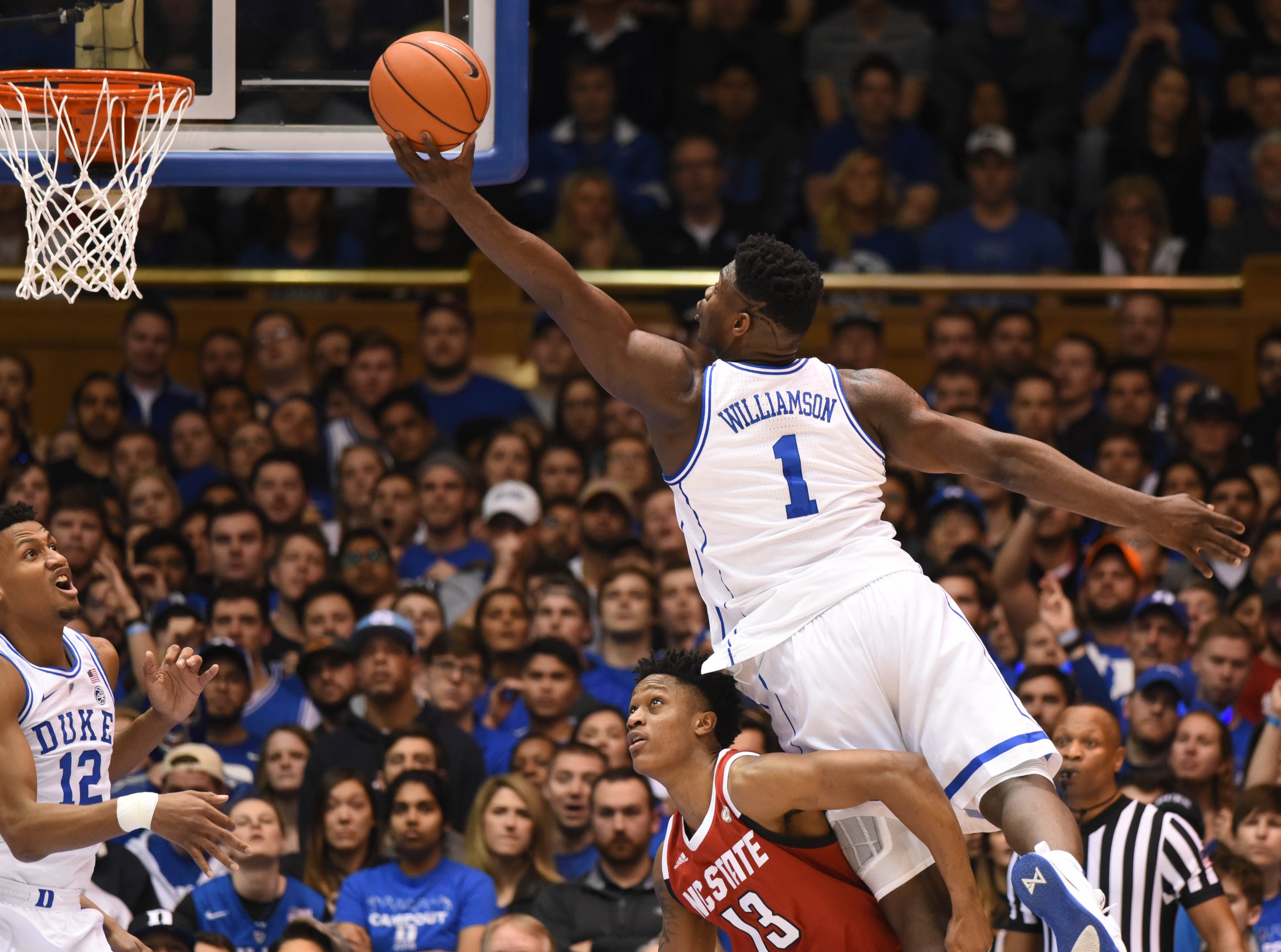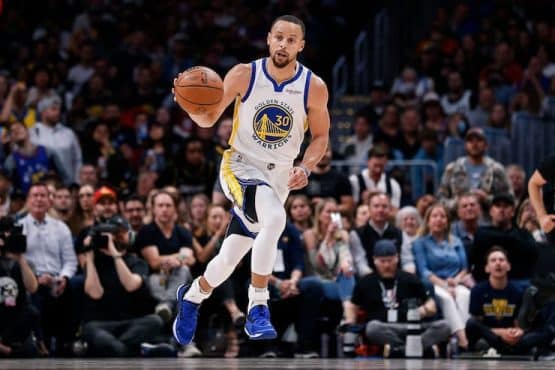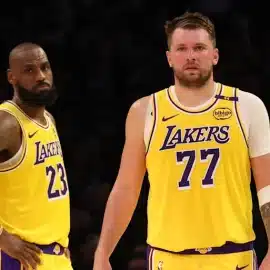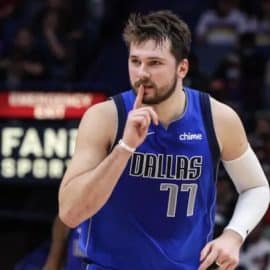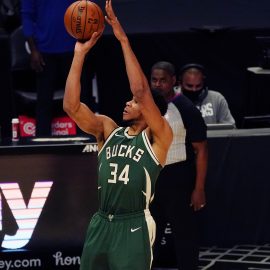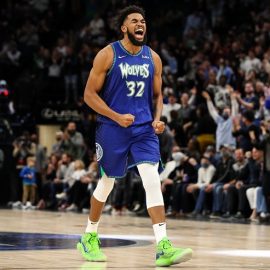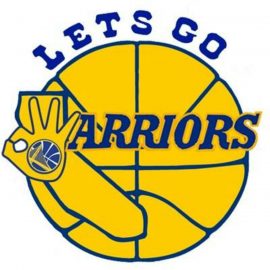A holistic approach to talent evaluation involves qualitative and quantitative analysis. However, a few times in every generation a talent shines so bright that all it really takes is the good old “eye test” to take notice. It only took a few minutes of watching Zion Williamson in a Duke uniform to see the obvious – he is something special that we haven’t really seen in college basketball before. The intellectually curious urge is to contextualize his play against the other top NBA prospects from recent drafts. But how do we do that without establishing a metric or baseline for comparative purposes? With Zion’s impact this college basketball season serving as convenient inspiration, my goal was simple – create a statistical profile or rating system that can be reasonably used to compare production amongst college basketball players across different seasons. This College Basketball Statistical Rating (CBSR) doesn’t exactly have an acronym that rolls off the tongue so all name suggestions are very welcome.
The first step was to determine which variables to use as inputs for my metric and to weigh those measures as effectively as possible to adequately assess Zion and the top prospects in this draft class against their counterparts in previous drafts. This immediately removed all players that didn’t play college basketball. There is no justifiable method to aggregate Euroleague statistics against NCAA basketball while adequately accounting for the disparity in level of competition and style of play/coaching. So Luka Doncic fans will have to settle for my thoughts on him in earlier works: here, here, and here.
For the initial purposes of this analysis I went through all the lottery picks back to the 2012 Anthony Davis draft class, as he was the natural pivot point of the last time I remember seeing a young man stand out so remarkably on the college basketball stage. So what measures would I need to account for in creating an admissible metric?
- Physical Profile: Age, height, and wingspan were the obvious physical measures to start with. It was imperative to adjust height and wingspan by positional category. Length is slightly more important protecting the rim than on the perimeter, which is why it would be weighed differently by positional category: guards, wings, and bigs. Naturally it was necessary to account for a 22-year-old senior having fewer development years and room for improvement ahead of them than an 18-year-old freshman.
- PER: John Hollinger’s player efficiency rating does a solid job of netting a player’s per-minute positive and negative impacts into a rating, much like what I was trying to accomplish. There was some apprehension with PER’s predilection towards bigs with impactful per-minute rebound and block totals. I wanted to incorporate PER as a lightly weighted input that could be used as a baseline, while sticking to my positional category breakout.
- SOS: Strength of schedule isn’t a perfect measure but it was necessary to adjust for the level of competition. Prospects facing tougher teams in stronger conferences deserve a bump over mid-major and smaller schools. Damian Lillard dropping 41 against San Jose St. isn’t the equivalent to Zion doing the same against an ACC team.
- WS/40: Winning matters, right? Bill James’ win shares credits players for their contributions towards their team’s wins and the WS/40 measure essentially converts it into a percentage of their team’s wins. This mitigates some of the noise PER creates by overvaluing per-minute monsters that play 15 minutes a night. Sorry Zach Collins.
- Offensive & Defensive Ratings: Admittedly there is noise in using a “team” stat like offensive and defensive rating when evaluating an individual, as we can’t truly account for the nuance in the value of the nine other players sharing the court with them. The weight for this measure was extremely low, effectively giving a tiny bonus point bump for prospects that were part of lineups with highly efficient offenses and extremely effective defenses.
- Shooting Profile: This included TS% and 3PM. With a deeper three-point line and the value of spacing and shooting in the NBA continuing to grow, it was important to bump players that had sterling true shooting percentages and 3Pt makes. These were weighted accordingly within each positional category. NBA teams can get away with drafting a big that can’t shoot 30 footers, but are they really targeting perimeter players without a jump shot?
I’ll save the dull technical breakdown of the formula for a follow up because at this point everyone is ready to hear where Zion stacks up. Before sharing the entire list of players evaluated I want to share each player within the context of their positional category, which I defined by the position that they will primarily defend in the NBA.
CBSR is best at evaluating players against their positional peers. So let’s start off with some takeaways from Zion’s group. Note the asterix for the 2019 prospects is their position on my current Big Board, speaking of which, there will be a teaser of the board at the very end.
| Wings | ||||
| Year | Pick | Name | Rank | CBSR |
| 2019 | 1* | Zion Williamson | 1 | 104.536 |
| 2013 | 3 | Otto Porter | 2 | 86.04 |
| 2019 | 3* | R.J. Barrett | 3 | 83.95 |
| 2018 | 10 | Mikal Bridges | 4 | 83.462 |
| 2016 | 14 | Denzel Valentine | 5 | 82.298 |
| 2019 | 11* | De’Andre Hunter | 6 | 81.094 |
| 2014 | 11 | Doug McDermott | 7 | 80.752 |
| 2014 | 2 | Jabari Parker | 8 | 79.18 |
| 2016 | 2 | Brandon Ingram | 9 | 77.764 |
| 2014 | 14 | T.J. Warren | 10 | 77.048 |
| 2014 | 8 | Nik Stauskas | 11 | 76.256 |
| 2016 | 1 | Ben Simmons | 12 | 74.754 |
| 2018 | 12 | Miles Bridges | 13 | 74.006 |
| 2015 | 8 | Stanley Johnson | 14 | 72.568 |
| 2017 | 3 | Jayson Tatum | 15 | 72.488 |
| 2015 | 10 | Justise Winslow | 16 | 71.932 |
| 2017 | 4 | Josh Jackson | 17 | 69.18 |
| 2019 | 19* | Keldon Johnson | 18 | 68.506 |
| 2019 | 6* | Cam Reddish | 19 | 67.342 |
| 2014 | 4 | Aaron Gordon | 20 | 66.046 |
| 2012 | 7 | Harrison Barnes | 21 | 66.012 |
| 2012 | 2 | Michael Kidd-Gilchrist | 22 | 65.514 |
| 2015 | 12 | Trey Lyles | 23 | 65.306 |
| 2018 | 9 | Kevin Knox | 24 | 64.046 |
| 2019 | 5* | Romeo Langford | 25 | 62.992 |
| 2018 | 14 | Michael Porter | 26 | 62.646 |
| 2013 | 14 | Shabazz Muhammad | 27 | 62.378 |
| 2016 | 12 | Taurean Prince | 28 | 62.346 |
| 2019 | 16* | Kevin Porter | 29 | 62.25 |
| 2019 | 15* | Nassir Little | 30 | 61.812 |
| 2016 | 3 | Jaylen Brown | 31 | 56.134 |
| 2019 | 14* | Sekou Doumbouya | EUROPE | |
| 2018 | 3 | Luka Doncic | EUROPE | |
| 2015 | 5 | Mario Hezonja | EUROPE | |
| 2014 | 12 | Dario Saric | EUROPE | |
Wings
- In terms of statistical production Zion is in a completely different galaxy from everyone else in his peer group. He’s also the only prospect in the entire player pool evaluated to crack triple digits.
- Zion’s teammate R.J. Barrett is a pleasant surprise, ranking much higher than expected. His usage levels were already very high and he will get a little bump with Zion missing some time recovering from injury. CBSR clearly rates Barrett as a star in college. The biggest question talent evaluators will have over the next few months with him is determining whether he can translate into a star in the NBA. Don’t think he will be comfortable as a role player.
- What CBSR seems to be demonstrating is the idea that it is relatively harder to make an immediate impact at the college level as a wing. Many of the higher rated players were upperclassmen that spent time adjusting to the college game, gradually improving their skills. Guards have the ball in their hands and the big men impact rim protection and finishing in easily quantifiable measures that translate seamlessly to statistical analysis and ratings.
- Several surprisingly low-rated players are understandable upon further reflection. Ben Simmons was impressive but seemed disinterested at LSU, while Jaylen Brown’s time at Cal was a mixed bag.
- Some of the highly-touted wings this year are having very inconsistent performances and CBSR punishes them for it. This includes Reddish, Langford, Little, and Porter. Speaking of Langford, I had some consternation as to whether to group him with the guards or wings.
- Remember CBSR is NOT saying that Nik Stauskas was a better prospect than Ben Simmons. The rating is simply evaluating their performance in college with statistical benchmarks. Think of it this way: based on the things we value in the NBA to the best ability that we can statistically interpret them with a rating that illustrates their performance in college, Nik Stauskas graded out as having played more effectively at Michigan than Ben Simmons did at LSU. Does that make sense?
| Guards | ||||
| Year | Pick | Name | Rank | CBSR |
| 2018 | 5 | Trae Young | 1 | 83.767 |
| 2015 | 2 | D’Angelo Russell | 2 | 82.928 |
| 2016 | 6 | Buddy Hield | 3 | 82.564 |
| 2012 | 6 | Damian Lillard | 4 | 80.942 |
| 2019 | 2* | Ja Morant | 5 | 80.524 |
| 2013 | 2 | Victor Oladipo | 6 | 80.423 |
| 2013 | 9 | Trey Burke | 7 | 79.633 |
| 2013 | 8 | Kentavious Caldwell-Pope | 8 | 78.795 |
| 2013 | 10 | C.J. McCollum | 9 | 78.657 |
| 2017 | 2 | Lonzo Ball | 10 | 77.663 |
| 2016 | 7 | Jamal Murray | 11 | 76.743 |
| 2017 | 13 | Donovan Mitchell | 12 | 75.254 |
| 2017 | 1 | Markelle Fultz | 13 | 74.546 |
| 2017 | 12 | Luke Kennard | 14 | 74.224 |
| 2013 | 7 | Ben McLemore | 15 | 73.794 |
| 2019 | 7* | Jarrett Culver | 16 | 73.227 |
| 2014 | 6 | Marcus Smart | 17 | 72.845 |
| 2017 | 11 | Malik Monk | 18 | 72.163 |
| 2015 | 13 | Devin Booker | 19 | 71.588 |
| 2014 | 1 | Andrew Wiggins | 20 | 70.77 |
| 2012 | 12 | Jeremy Lamb | 21 | 70.625 |
| 2012 | 4 | Dion Waiters | 22 | 69.041 |
| 2012 | 3 | Bradley Beal | 23 | 68.18 |
| 2019 | 10* | Darius Garland | 24 | 66.946 |
| 2018 | 8 | Collin Sexton | 25 | 66.799 |
| 2015 | 14 | Cameron Payne | 26 | 65.531 |
| 2018 | 11 | Shai Gilgeous-Alexander | 27 | 65.434 |
| 2017 | 5 | De’Aaron Fox | 28 | 64.729 |
| 2013 | 11 | Michael Carter-Williams | 29 | 62.363 |
| 2012 | 8 | Terrence Ross | 30 | 62.041 |
| 2017 | 9 | Dennis Smith | 31 | 61.929 |
| 2016 | 5 | Kris Dunn | 32 | 57.347 |
| 2018 | 13 | Jerome Robinson | 33 | 56.289 |
| 2012 | 10 | Austin Rivers | 34 | 56.003 |
| 2014 | 13 | Zach LaVine | 35 | 50.932 |
| 2012 | 13 | Kendall Marshall | 36 | 50.414 |
| 2014 | 10 | Elfrid Payton | 37 | 47.824 |
| 2017 | 8 | Frank Ntilikina | EUROPE | |
| 2015 | 7 | Emmanuel Mudiay | CHINA | |
| 2014 | 5 | Dante Exum | AUSTRALIA | |
Guards
- At the top there is very little between Young, Russell, Hield, Lillard, Morant, and Oladipo. Morant finds himself in good company with the other five building on their college experiences with successful transitions to the NBA.
- Beal, Wiggins, Fox, and LaVine have all outperformed their college production in the NBA. All of them besides LaVine were drafted at the top of the draft because scouts saw enough in their play to feel confident in their skills translating.
- Several of the lower rated guards should be no surprise. There were significant concerns for how they would adapt at the next level. Accordingly Payton, Rivers, Marshall, and Robinson were drafted at the bottom of the lottery.
- Dunn, Smith, Ross, and Sexton were interesting to evaluate because they all had significant roles on their college teams with high usage rates and low efficiency. So far early returns on their NBA careers have been mixed.
- CBSR clearly rates the 2019 guard class to be very weak.
| Bigs | ||||
| Year | Pick | Name | Rank | CBSR |
| 2012 | 1 | Anthony Davis | 1 | 96.4 |
| 2019 | 4* | Bol Bol | 2 | 94.048 |
| 2015 | 1 | Karl-Anthony Towns | 3 | 91.772 |
| 2018 | 2 | Marvin Bagley | 4 | 85.566 |
| 2018 | 6 | Mohamed Bamba | 5 | 85.354 |
| 2018 | 4 | Jaren Jackson | 6 | 85.28 |
| 2017 | 10 | Zach Collins | 7 | 84.718 |
| 2019 | 9* | Brandon Clarke | 8 | 84.698 |
| 2019 | 8* | Jaxson Hayes | 9 | 84.582 |
| 2018 | 1 | Deandre Ayton | 10 | 83.854 |
| 2013 | 13 | Kelly Olynyk | 11 | 83.62 |
| 2018 | 7 | Wendell Carter | 12 | 83.578 |
| 2016 | 9 | Jakob Poeltl | 13 | 83.152 |
| 2015 | 3 | Jahlil Okafor | 14 | 82.74 |
| 2014 | 3 | Joel Embiid | 15 | 82.306 |
| 2019 | 12* | Bruno Fernando | 16 | 82.208 |
| 2017 | 7 | Lauri Markkanen | 17 | 81.56 |
| 2013 | 4 | Cody Zeller | 18 | 81.348 |
| 2015 | 9 | Frank Kaminsky | 19 | 80.128 |
| 2013 | 1 | Anthony Bennett | 20 | 77.816 |
| 2017 | 6 | Jonathan Isaac | 21 | 77.8 |
| 2015 | 11 | Myles Turner | 22 | 76.766 |
| 2019 | 17* | Rui Hachimura | 23 | 76.414 |
| 2013 | 6 | Nerlens Noel | 24 | 74.452 |
| 2016 | 11 | Domantas Sabonis | 25 | 74.15 |
| 2012 | 5 | Thomas Robinson | 26 | 73.242 |
| 2019 | 13* | Jontay Porter | 27 | 70.058 |
| 2014 | 7 | Julius Randle | 28 | 68.952 |
| 2019 | 18* | Daniel Gafford | 29 | 68.8 |
| 2013 | 5 | Alex Len | 30 | 68.65 |
| 2012 | 11 | Meyers Leonard | 31 | 68.154 |
| 2017 | 14 | Bam Adebayo | 32 | 68.032 |
| 2015 | 6 | Willie Cauley-Stein | 33 | 67.968 |
| 2013 | 12 | Steven Adams | 34 | 67.26 |
| 2014 | 9 | Noah Vonleh | 35 | 66.914 |
| 2012 | 14 | John Henson | 36 | 64.25 |
| 2016 | 8 | Marquese Chriss | 37 | 63.746 |
| 2012 | 9 | Andre Drummond | 38 | 55.992 |
| 2016 | 4 | Dragan Bender | EUROPE | |
| 2016 | 10 | Thon Maker | POSTGRAD | |
| 2016 | 13 | Georgios Papagiannis | EUROPE | |
| 2015 | 4 | Kristaps Porzingis | EUROPE | |
Bigs
- Finally we have some competition for Zion’s CBSR throne. It comes from his ideal counterpoint for the purposes of this analysis: Anthony Davis. At least we have some confirmation that reminiscing of Davis’s exploits at Kentucky was not merely foolish nostalgia.
- One of the more surprising results coming from this was how CBSR positively rates this year’s big men. Bol Bol in particular prior to his injury exceeding KAT was not something I was expecting to see. Bol Bol will likely fluctuate on a lot of draft boards. I can see him as high as No. 2 and as low as No. 20.
- Who says analytics can’t be artistic? It’s beautiful how tightly the 2018 triumvirate of Bagley, Jackson, and Bamba rated out: within 0.3 CBSR points of each other. Take that for data!
- Are all statistical profile rating systems destined for a big man bias? Or is it a product of the big men having the easiest path to produce at the college level with the physical advantage between top level talent being less drastic in the pros?
| All Prospects | |||||
| Year | Pick | Name | Position | Rank | CBSR |
| 2019 | 1* | Zion Williamson | WING | 1 | 104.536 |
| 2012 | 1 | Anthony Davis | BIG | 2 | 96.4 |
| 2019 | 4* | Bol Bol | BIG | 3 | 94.048 |
| 2015 | 1 | Karl-Anthony Towns | BIG | 4 | 91.772 |
| 2013 | 3 | Otto Porter | WING | 5 | 86.04 |
| 2018 | 2 | Marvin Bagley | BIG | 6 | 85.566 |
| 2018 | 6 | Mohamed Bamba | BIG | 7 | 85.354 |
| 2018 | 4 | Jaren Jackson | BIG | 8 | 85.28 |
| 2017 | 10 | Zach Collins | BIG | 9 | 84.718 |
| 2019 | 9* | Brandon Clarke | BIG | 10 | 84.698 |
| 2019 | 8* | Jaxson Hayes | BIG | 11 | 84.582 |
| 2019 | 3* | R.J. Barrett | WING | 12 | 83.95 |
| 2018 | 1 | Deandre Ayton | BIG | 13 | 83.854 |
| 2018 | 5 | Trae Young | GUARD | 14 | 83.767 |
| 2013 | 13 | Kelly Olynyk | BIG | 15 | 83.62 |
| 2018 | 7 | Wendell Carter | BIG | 16 | 83.578 |
| 2018 | 10 | Mikal Bridges | WING | 17 | 83.462 |
| 2016 | 9 | Jakob Poeltl | BIG | 18 | 83.152 |
| 2015 | 2 | D’Angelo Russell | GUARD | 19 | 82.928 |
| 2015 | 3 | Jahlil Okafor | BIG | 20 | 82.74 |
| 2016 | 6 | Buddy Hield | GUARD | 21 | 82.564 |
| 2014 | 3 | Joel Embiid | BIG | 22 | 82.306 |
| 2016 | 14 | Denzel Valentine | WING | 23 | 82.298 |
| 2019 | 12* | Bruno Fernando | BIG | 24 | 82.208 |
| 2017 | 7 | Lauri Markkanen | BIG | 25 | 81.56 |
| 2013 | 4 | Cody Zeller | BIG | 26 | 81.348 |
| 2019 | 11* | De’Andre Hunter | WING | 27 | 81.094 |
| 2012 | 6 | Damian Lillard | GUARD | 28 | 80.942 |
| 2014 | 11 | Doug McDermott | WING | 29 | 80.752 |
| 2019 | 2* | Ja Morant | GUARD | 30 | 80.524 |
| 2013 | 2 | Victor Oladipo | GUARD | 31 | 80.423 |
| 2015 | 9 | Frank Kaminsky | BIG | 32 | 80.128 |
| 2013 | 9 | Trey Burke | GUARD | 33 | 79.633 |
| 2014 | 2 | Jabari Parker | WING | 34 | 79.18 |
| 2013 | 8 | Kentavious Caldwell-Pope | GUARD | 35 | 78.795 |
| 2013 | 10 | C.J. McCollum | GUARD | 36 | 78.657 |
| 2013 | 1 | Anthony Bennett | BIG | 37 | 77.816 |
| 2017 | 6 | Jonathan Isaac | BIG | 38 | 77.8 |
| 2016 | 2 | Brandon Ingram | WING | 39 | 77.764 |
| 2017 | 2 | Lonzo Ball | GUARD | 40 | 77.663 |
| 2014 | 14 | T.J. Warren | WING | 41 | 77.048 |
| 2015 | 11 | Myles Turner | BIG | 42 | 76.766 |
| 2016 | 7 | Jamal Murray | GUARD | 43 | 76.743 |
| 2019 | 17* | Rui Hachimura | BIG | 44 | 76.414 |
| 2014 | 8 | Nik Stauskas | WING | 45 | 76.256 |
| 2017 | 13 | Donovan Mitchell | GUARD | 46 | 75.254 |
| 2016 | 1 | Ben Simmons | WING | 47 | 74.754 |
| 2017 | 1 | Markelle Fultz | GUARD | 48 | 74.546 |
| 2013 | 6 | Nerlens Noel | BIG | 49 | 74.452 |
| 2017 | 12 | Luke Kennard | GUARD | 50 | 74.224 |
| 2016 | 11 | Domantas Sabonis | BIG | 51 | 74.15 |
| 2018 | 12 | Miles Bridges | WING | 52 | 74.006 |
| 2013 | 7 | Ben McLemore | GUARD | 53 | 73.794 |
| 2012 | 5 | Thomas Robinson | BIG | 54 | 73.242 |
| 2019 | 7* | Jarrett Culver | GUARD | 55 | 73.227 |
| 2014 | 6 | Marcus Smart | GUARD | 56 | 72.845 |
| 2015 | 8 | Stanley Johnson | WING | 57 | 72.568 |
| 2017 | 3 | Jayson Tatum | WING | 58 | 72.488 |
| 2017 | 11 | Malik Monk | GUARD | 59 | 72.163 |
| 2015 | 10 | Justise Winslow | WING | 60 | 71.932 |
| 2015 | 13 | Devin Booker | GUARD | 61 | 71.588 |
| 2014 | 1 | Andrew Wiggins | GUARD | 62 | 70.77 |
| 2012 | 12 | Jeremy Lamb | GUARD | 63 | 70.625 |
| 2019 | 13* | Jontay Porter | BIG | 64 | 70.058 |
| 2017 | 4 | Josh Jackson | WING | 65 | 69.18 |
| 2012 | 4 | Dion Waiters | GUARD | 66 | 69.041 |
| 2014 | 7 | Julius Randle | BIG | 67 | 68.952 |
| 2019 | 18* | Daniel Gafford | BIG | 68 | 68.8 |
| 2013 | 5 | Alex Len | BIG | 69 | 68.65 |
| 2019 | 19* | Keldon Johnson | WING | 70 | 68.506 |
| 2012 | 3 | Bradley Beal | GUARD | 71 | 68.18 |
| 2012 | 11 | Meyers Leonard | BIG | 72 | 68.154 |
| 2017 | 14 | Bam Adebayo | BIG | 73 | 68.032 |
| 2015 | 6 | Willie Cauley-Stein | BIG | 74 | 67.968 |
| 2019 | 6* | Cam Reddish | WING | 75 | 67.342 |
| 2013 | 12 | Steven Adams | BIG | 76 | 67.26 |
| 2019 | 10* | Darius Garland | GUARD | 77 | 66.946 |
| 2014 | 9 | Noah Vonleh | BIG | 78 | 66.914 |
| 2018 | 8 | Collin Sexton | GUARD | 79 | 66.799 |
| 2014 | 4 | Aaron Gordon | WING | 80 | 66.046 |
| 2012 | 7 | Harrison Barnes | WING | 81 | 66.012 |
| 2015 | 14 | Cameron Payne | GUARD | 82 | 65.531 |
| 2012 | 2 | Michael Kidd-Gilchrist | WING | 83 | 65.514 |
| 2018 | 11 | Shai Gilgeous-Alexander | GUARD | 84 | 65.434 |
| 2015 | 12 | Trey Lyles | WING | 85 | 65.306 |
| 2017 | 5 | De’Aaron Fox | GUARD | 86 | 64.729 |
| 2012 | 14 | John Henson | BIG | 87 | 64.25 |
| 2018 | 9 | Kevin Knox | WING | 88 | 64.046 |
| 2016 | 8 | Marquese Chriss | BIG | 89 | 63.746 |
| 2019 | 5* | Romeo Langford | WING | 90 | 62.992 |
| 2018 | 14 | Michael Porter | WING | 91 | 62.646 |
| 2013 | 14 | Shabazz Muhammad | WING | 92 | 62.378 |
| 2013 | 11 | Michael Carter-Williams | GUARD | 93 | 62.363 |
| 2016 | 12 | Taurean Prince | WING | 94 | 62.346 |
| 2019 | 16* | Kevin Porter | WING | 95 | 62.25 |
| 2012 | 8 | Terrence Ross | GUARD | 96 | 62.041 |
| 2017 | 9 | Dennis Smith | GUARD | 97 | 61.929 |
| 2019 | 15* | Nassir Little | WING | 98 | 61.812 |
| 2016 | 5 | Kris Dunn | GUARD | 99 | 57.347 |
| 2018 | 13 | Jerome Robinson | GUARD | 100 | 56.289 |
| 2016 | 3 | Jaylen Brown | WING | 101 | 56.134 |
| 2012 | 10 | Austin Rivers | GUARD | 102 | 56.003 |
| 2012 | 9 | Andre Drummond | BIG | 103 | 55.992 |
| 2014 | 13 | Zach LaVine | GUARD | 104 | 50.932 |
| 2012 | 13 | Kendall Marshall | GUARD | 105 | 50.414 |
| 2014 | 10 | Elfrid Payton | GUARD | 106 | 47.824 |
| 2019 | 14* | Sekou Doumbouya | WING | ||
| 2018 | 3 | Luka Doncic | WING | ||
| 2017 | 8 | Frank Ntilikina | GUARD | ||
| 2016 | 4 | Dragan Bender | BIG | ||
| 2016 | 10 | Thon Maker | BIG | ||
| 2016 | 13 | Georgios Papagiannis | BIG | ||
| 2015 | 4 | Kristaps Porzingis | BIG | ||
| 2015 | 5 | Mario Hezonja | WING | ||
| 2015 | 7 | Emmanuel Mudiay | GUARD | ||
| 2014 | 5 | Dante Exum | GUARD | ||
| 2014 | 12 | Dario Saric | WING | ||
So what does this all mean?
- It confirms that every time Zion makes our jaws drop with another spectacular performance we shouldn’t question our eyes or our minds. Rather, we should simply accept that we are witnessing something very special.
- The other interesting outcome from this exercise was that the rest of this 2019 draft class actually graded out higher than we may have expected. A factor to consider is that their current statistical profiles are inflated and will regress to the mean as we get to the conference tournaments and March Madness where they will face greater pressure and locked-in defenses.
- Comparing draft classes I was curious to see which lotteries may have been the most difficult to evaluate by NBA teams at the time. A standard deviation of the lottery’s CBSR could be useful. Turns out the 2013 Anthony Bennett draft and the 2017 Markelle Fultz draft had significantly lower standard deviations from the other drafts. Looking back at 2013 this makes total sense as it was a weaker draft in hindsight with no clear superstars. It’s too early to judge the 2017 players but early signs are that the lottery should produce at least several stars and high-level starters between Mitchell, Fox, Tatum, Markkanen, Isaac and Ball. Having no stars or having a lot of stars to choose from definitely makes drafting decisions more challenging.
- It probably goes without saying but any consideration for using CBSR as a predictor for future success would be reckless without extensive qualitative context. This analysis was created solely to provide quantitative context for Zion’s spectacular season. Just wanted to have some disclaimer in here to preclude assumptions that I’m predicting Zion will definitely have a better NBA career than every other player analyzed.
- Zion being such a unique combination of size and explosiveness, the one caveat with his career longevity is making sure to maintain his health. LeBron is the best example of optimizing his athletic gifts with developments in sports science, diet, sleeping, and workout habits. Zion taking advantage of similar routines earlier in his career can improve his chances of extending it by mitigating the risk of significant injuries. With his power my biggest fear for him is the risk of impact trauma on his body. He’s literally bursting out of his shoes.
If you made it this far, here is a sneak preview of my upcoming 2019 NBA Draft Big Board:
| Rank | PLAYER | POS | TEAM | AGE |
| 1 | Zion Williamson | PF/C | Duke | 18.6 |
| 2 | Ja Morant | PG | Murray St. | 19.5 |
| 3 | R.J. Barrett | SF | Duke | 18.6 |
| 4 | Bol Bol | C | Oregon | 19.1 |
| 5 | Romeo Langford | SG | Indiana | 19.2 |
| 6 | Cam Reddish | SF | Duke | 19.4 |
| 7 | Jarrett Culver | SG | Texas Tech | 20 |
| 8 | Jaxson Hayes | C | Texas | 18.8 |
| 9 | Brandon Clarke | PF | Gonzaga | 22.5 |
| 10 | Darius Garland | PG | Vanderbilt | 19.1 |
| 11 | De’Andre Hunter | SG | Virginia | 21 |
| 12 | Bruno Fernando | C | Maryland | 20.5 |
| 13 | Jontay Porter | C | Missouri | 19.3 |
| 14 | Sekou Doumbouya | PF | PB86 | 18.2 |
| 15 | Nassir Little | SF | UNC | 18.9 |
| 16 | Kevin Porter | SG | USC | 18.8 |
| 17 | Rui Hachimura | PF | Gonzaga | 21.1 |
| 18 | Daniel Gafford | PF | Arkansas | 20.4 |
| 19 | Keldon Johnson | SF | Kentucky | 19.5 |
| 20 | Goga Bitadze | C | Budocnos | 19.6 |
| 21 | Kezie Okpala | SF | Stanford | 19.8 |
| 22 | Nickeil Alexander-Walker | SG | Virginia Tech | 20.5 |
| 23 | P.J. Washington | PF | Kentucky | 20.5 |
| 24 | Ayo Dosunmu | PG | Illinois | 19.2 |
| 25 | Coby White | PG | UNC | 19 |
| 26 | Tyler Herro | SG | Kentucky | 19.1 |
| 27 | Tre Jones | PG | Duke | 19.1 |
| 28 | Talen Horton-Tucker | SF | Iowa State | 18.3 |
| 29 | Grant Williams | PF | Tennessee | 20.3 |
| 30 | Shamorie Ponds | PG | St. Johns | 20.7 |
Add The Sports Daily to your Google News Feed!
